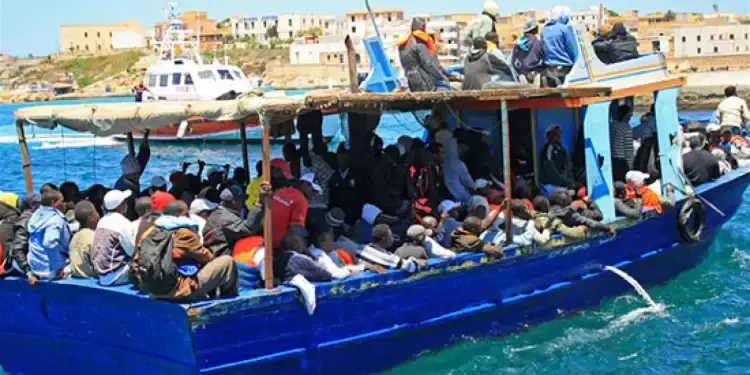Italy recorded a significant decrease in the arrivals of irregular migrants by the sea in 2024. According to data provided by the European border control agency, Frontex, the arrivals dropped by almost 60% compared to 2023.
This reduction is largely explained by the joint efforts of the Tunisian and Libyan authorities to combat the networks of traffickers operating in the region. These measures, including reinforced surveillance operations, arrests and dismantles of networks, helped to slow down the departures of the Tunisian and Libyan coasts, which were until recently the main irregular migration platforms to Europe.
In 2023, migrants from Tunisia and Libya represented 92% of the arrivals reported on the road to the Central Mediterranean, making this region the epicenter of migratory flows to Italy.
Detail figures
In 2024, according to the Italian agency Nova, 41,425 migrants arrived in Italy from Libya, or 65.5% of the total of the 63,246 arrivals recorded until December 29. Although this figure remains high, it marks a significant decrease compared to previous years.
Tunisia, on the other hand, has experienced an even more spectacular reduction in the number of departures. Only 3,495 migrants arrived in Italy from its coasts, representing 1.1% of the total arrivals in 2024. This figure testifies to a significant effort by the Tunisian authorities to stem the phenomenon, in collaboration with European countries.
Several factors have contributed to this drop:
1. Strengthening bilateral agreements with Europe: the European Union has intensified its cooperation with Tunisia and Libya, in particular by funding to improve maritime surveillance and fight against criminal networks.
2. International pressure: Faced with the increase in flows in 2023, the European authorities multiplied discussions with countries of origin and transit to establish more strict policies.
3. Economic and social crises in the countries of departure: in Tunisia, economic reforms and internal tensions have also slowed down departures, although many candidates for migration continue to seek means to join Europe.
An evolving phenomenon
Despite these advances, the challenges remain immense. The central Mediterranean road remains one of the most dangerous in the world. International organizations continue to sound the alarm concerning the precarious conditions of migrants in the detention centers in Libya and the risks involved at sea.
Europe, for its part, faces a dilemma: reducing migratory flows while respecting migrants’ rights and offering lasting solutions to manage humanitarian crises.
While the year 2025 begins, the Italian, Tunisian and Libyan authorities are continuing their efforts to maintain this trend. However, the stability of the region, the fight against trafficking and European asylum and immigration policies will play a key role in the management of upcoming migratory flows.








